Wisconsin Public Television
Transcript For: “In Wisconsin”
Original Air Date: Thursday, September 18, 2008
[music]
Patty Loew:
Hi, and welcome to “In Wisconsin.” I’m Patty Loew. This week meet a family that heads to Green Lake County each year for a treasured get-together with each other and these cows. Find out how this Waunakee woman is counting on a man she barely knows to save her life. Its not the hills that are alive with music, its the sand found in the Apostle Islands. Plus, do bird houses and bookshelves come to mind when you think of high school wood shop projects? A group of Darlington students is moving beyond that and thinking big, really big “In Wisconsin.”
Announcer:
Major funding for In Wisconsin is provided by the people of Alliant Energy, who bring safe, reliable, and environmentally friendly energy to keep homes, neighborhoods, and life in Wisconsin running smoothly. Alliant Energy, offering energy-saving ideas on the web. The University of Wisconsin Carbone Comprehensive Cancer Center, comprehensive as designated by the National Cancer Institute. Providing cancer research, education, and treatment for people throughout Wisconsin. UW Carbone Comprehensive Cancer Center, cancer care for the greater good. And by the Animal Dental Center of Milwaukee and Oshkosh. A veterinary specialist working with pet owners and family veterinarians throughout Wisconsin, providing care for oral disease and dental problems of small companion animals.
Loew:
Family traditions shape who we are. Maybe you grew up sharing a special holiday meal, or there was a well-loved vacation spot that your family returned to again and again. Our first report this week does feature a family tradition that involves a trip to an island but as Liz Koerner reports, it’s less building castles in the sand and more of a bovine beach day.
Liz Koerner:
Even the youngest members of the Rowe family get all duded up on one special day each spring.
Rowe Family Member:
Some of my earliest memories are coming up here when I was you know three, four, five years old.
Koerner:
The very large extended Rowe family, headed by Dave and Cindy, come together this time of year for an unusual family gathering. And family is what it’s all about.
Dave Rowe:
It seems to get bigger and bigger every year.
Koerner:
They call it the cattle crossing and it is like nothing you’ll see anywhere else in Wisconsin.
Dave Rowe:
Not many people cross cattle our way, that’s for sure.
Koerner:
The Rowe family, brothers and sisters, aunts and uncles all lend a hand.
Dave Rowe:
Dennis, why don’t you jump on with Luke, okay.
Koerner:
To ferry beef cattle across a narrow stretch of water to a grassy island they own. The island straddles the Marquette and Green Lake County line. The family rents this rich summer pasture land to a beef rancher who trucks about 100 of his animals from the Stevens Point area an hour and a half away. Sunny Marquard, the cattle owner, says the long drive has become necessary.
Sunny Marquard:
Where we come from, pasture land is hard to come by. There is not a lot of it available. There is a lot of land around, but most of it doesn’t have fences, and in order to fence it, it would be extremely expensive for a lot of this ground so good cropland nowadays is used for cropland. Nobody is going to use it for pasture.
Koerner:
They send the calves over on the barge first. That way, their mothers are eager to follow. They used to just let the cattle swim across to the island, but the last time they did that, they had a problem. The cattle figured out they could get off the island the same way they got on.
Dave Rowe:
They ended up at actually a neighbor’s farm eating corn out of his crib.
Koerner:
The barge itself is an invention dreamed up and handcrafted by the Rowe family.
Dave Rowe:
It’s got 54, 55-gallon drums under it. I think we have it figured out it actually can hold 45,000 pounds.
Koerner:
It’s the job of the athletic younger cousins on top of the barge to haul on the overhead cable. On this day, they can carry only seven cows at a time because the wind and the current make the barge hard to maneuver.
Casey Eggleston:
Basically, we have to keep the barge straight. We’re getting pushed by the current, and on a day like today, it was very windy when we were up there too, and it’s always trying to push the barge downstream. We have to keep it so it keeps less tension on that and keeps it straight between the corrals.
Koerner:
While it may look like it, the guys on top aren’t actually pulling the barge across the water all on their own, but they used to.
Dave Rowe:
When we first started this, we used to manually pull that barge all across the river, and a friend who lives in the area said hey, how about if I push you guys across with a boat? Light bulb goes on, and it sounded good.
Koerner:
Even with a motorboat, it’s hard work for the guys on top. Greg Rowe explains why he keeps coming back.
Greg Rowe:
It’s a great weekend. Its really been good for the family. It’s like the island is the thing that keeps our family really close. Every weekend every summer, we’re up here, and cattle move weekend is just our fun, special, really weird activity that we do together.
Koerner:
There are 17 cousins in the Rowe family. Some travel up to five hours to help out with the cattle crossing. Some even go to extremes.
Danielle Rowe:
They said my name, I walked across the stage, kept walking until I got to my car and got to the island as fast as I could.
Koerner:
Why?
Danielle Rowe:
It’s my family. I love this.
Koerner:
After many, many trips to the island, all the mothers are reunited with their calves, and then they open the gate of the holding corral, and the cattle head for high pasture. It’s been another successful Rowe Family Cattle Crossing.
Casey Eggleston:
It’s great. It’s great. We love doing it every year and coming up to the island. It’s a special place for our entire family. We love coming up here.
Loew:
After the cattle crossing, one young mother decided she had had enough of the island life and swam back to the mainland. But the Rowes quickly rounded her up and ferried her back to the island, reuniting her with her forlorn calf. Wisconsin’s airports could be busier than usual this weekend as scientists from around the globe descend on Madison for the World Stem Cell Summit early next week. Wisconsin is at the epicenter of stem cell research due to UW-Madisons discovery of the cells ten years ago. Today work goes on on labs across campus, trying to translate research into cures or treatments for diseases. That work could one day lead to life-changing discoveries for many people, including a Waunakee woman who enthusiastically lives life now but has a very uncertain future. Frederica Freyberg reports.
Frederica Freyberg:
Laura Sowinski fills the school hallways with high-octane energy, supercharged, friendly, and pumped for the day. To her students, she’s Ms. Sowinski, Associate Principal at Waunakee Middle School.
Laura Sowinski:
I’m here at 7:30 in the morning and don’t head out until 5:00 when the day is done.
Freyberg:
Not that her day is done then. Sowinski also has three young children at home. So when doctors diagnosed this super mom with multiple sclerosis in 2001, it threw her for a loop.
Sowinski:
My initial reaction was devastation. I thought how can this possibly be me?
Freyberg:
It soon became clear this was the new her.
Sowinski:
A numbness in my legs and tingling, and then I started having difficulties with my vision.
Freyberg:
Sowinskis MS is the relapsing and remitting type. Unpredictable. This past summer it flared. She had difficulty walking, speaking.
Sowinski:
It was very scary, and it put me in tears. Sometimes it would make me feel as though there was not a whole lot that I could do to help myself.
Colleen Kalt:
It is a disease where the immune system actually attacks itself, and that’s when the scars appear on your central nervous system. When you have scarring on that central nervous system it is like having a break in a wire. The messages from your brain throughout your body get distorted or redirected.
Freyberg:
Colleen Kalt of the MS Society says its mission is to end the devastating effects of the disease. Toward that, the society has pumped $15 1/2 million into new research, including at the UW-Madison. UW scientists are among four teams across the world working with this grant money to restore function in MS patients. Working to find ways to repair nerve fibers that are damaged by MS. This is of urgent interest everywhere, but especially in this state where there is heightened incidence of MS.
Kalt:
We have here in Wisconsin, 1 in 500 people in the state have the disease compared to, for example, 1 in 10,000 in Texas.
Freyberg:
It’s theorized that the genetic predisposition to MS and the lack of Vitamin D in sunlight make people in northern climates more susceptible to the disease. Given the high incidence of MS in Wisconsin and the corresponding number of families hoping and waiting for a cure, it is fitting, perhaps, that UW is at the forefront of such science. But important parts of that research involve using embryonic stem cells and embryonic stem cell use is controversial. So how does the MS Society, which funds this research, reconcile this controversy with its members?
Kalt:
Those people who want to fund research but not this particular type of research have every option to fund the type of research that we want. So less than 3% of our current research budget is used for stem cell research.
Ian Duncan:
What we’re trying to make embryonic stem cells into the type of cell that we need for brain repair.
Freyberg:
Dr. Ian Duncan and scientists in his lab are developing techniques for cell transplants that could repair and protect the nervous systems of people with MS, nervous systems damaged by the disease.
Duncan:
My hope, my fervent hope, is that the work that we’re doing right now will translate into clinical therapy and help improve the function of people with MS. That we’ll be able to take the fruits of our labors over the years into creating functional improvement. I think we’re close. The ideas are there, we’ve done this experimentally in animals. The results are good from our lab and elsewhere so there is lots of promise.
Freyberg:
Duncan says the first phase of human trials could begin in about two years.
Duncan:
I don’t want to offer false hope, but I do want to offer some hope and say that we’re making progress at a sufficiently great rate.
Freyberg:
What kind of promise does his research hold?
Kalt:
Hope.
Freyberg:
Hope and new pharmaceutical treatments are about all that people with MS have to hold onto for now.
Sowinski:
If the course of this disease continues to affect me the way it has these last ten years, it’s hard for me to know how effective I will be as a mother and as a professional and as a spouse in the goals that I have for life.
Freyberg:
Looking forward to an uncertain future, people like Laura Sowinski hold out for the elusive cure.
Sowinski:
I do hope that there will be a cure for this. I just want to make the best of life and its opportunities.
Freyberg:
This educator says while she watches and waits for today’s research to bring new answers, she’s also pinning her hopes on the next generation of scientists and doctors who she says she passes in the halls every day.
Sowinski:
Kelly, come tell me about your game tonight. Reedsburg?
Loew:
Dr. Ian Duncan is among the panelists who will discuss specific diseases at the World Stem Cell Summit. You can get more information about the summit on our website at wpt.org/inwisconsin. Other panels at the event will include those on cancer, diabetes, Parkinson’s, and ALS. There is also a public day of science outreach called Lab on the Lake. Our next report takes us to the southwestern part of our state to the town of Darlington. That’s where Richard Anderson’s wood shop class is turning out some heavy-duty projects. Not bird houses or bookshelves like most shop classes. No, these students are thinking big, and their work just may turn Lafayette County into a tourist destination.
Art Hackett:
Students in wood shop traditionally end the year with a project.
Jerred Jacobsen:
My projects were just smaller like bookshelves, a cabinet.
Student:
I did a gazebo my freshman year.
Hackett:
Those projects were done before Darlington High School’s wood tech teacher, Richard Anderson, pitched an idea that’s on its way to becoming a Darlington High tradition. What, you ask, was this class project? Well, these students are standing on it.
Student:
Was there like an old road here or something?
Hackett:
Anderson says it began with a visit from a local contractor who was building a cabin just outside of town.
Richard Anderson:
He stopped in and asked if we would build him a covered bridge.
Hackett:
Wiegel offered to pay for the materials if Anderson’s students wanted to pursue it as a class project.
Anderson:
What I envisioned was a small one to go over like a garden-type structure.
Hackett:
Did you have any reservations about this?
Anderson:
I found that if you think things over too much maybe you spoil it.
Anderson:
Put your piece up that you cut, the practice one. Okay.
Hackett:
Anderson and the students didn’t know that much about building covered bridges at the time.
Student:
This is going the flip around and go up like that, right? This angle has to go back.
Hackett:
The students say they just used common sense and tried to build in a safety margin.
Jordan Torstenson:
We didn’t just throw it together and say — we made sure we had the least amount of joints in the same piece. We made sure that we had the greatest size of lumber that we could get in each piece. With the cross members and with all the trusses up here, it makes it stronger as well. Each bottom beam that we made is 1,000 pounds apiece.
Anderson:
I think after we placed this one and set it down it seemed like that couldn’t be the end of the process. It needed to be the beginning.
Hackett:
And it was the beginning of an annual effort. As the 2007/2008 school year drew to a close, bridge number two was nearing completion in the school parking lot. Asked about lessons learned from bridge number one, the students offered one word.
Josh Singer:
Angles like you saw today. We still have trouble with them. Angles are a big one.
Student:
Everywhere you look there are angles. Trusses, walls stick out 11 degrees.
Hackett:
The planning of bridge number two was a little more sophisticated.
Torstenson:
We mainly started this year with load testing. We did load testing this year. We went over to UW-Platteville and used some machines to test some different kind of designs of beams for under the floor.
Hackett:
There are still lots of angles in bridge number two. The students are fitting the boards which will trim the gables of the roof. The gables stretch outward. The boards meet with a compound angle, slanting in two different directions.
Student:
That’s the obtuse angle.
Anderson:
Geometry word. Let me go down and get Mr. Cohen. Show me what you had set there first.
Hackett:
The biggest challenge in building bridges hasn’t been the cutting, the drilling, or the hammering. It’s been the thinking.
Student:
The thinking was really hard. Mr. Anderson did a lot of that. He’s really good at that, and he’s trying to teach us to do the same thing, which that’s one thing that we haven’t enjoyed to do but we at least attempt it, most of the problems he throws our way.
Anderson:
I suppose one of you guys were thinking of this already. You said if that edge is no good, then why don’t we make a new edge?
Hackett:
After the boards are cut, the students lift them into place.
Student:
One of these is cut backwards.
Student:
There, yeah, take this one down.
Anderson:
Let it down to me.
Anderson:
One student summed it up saying they learned that there is a lot more to it. I think we tend to oversimplify a lot of stuff. It goes both ways. Probably students think that life is pretty easy and the people that are living life think that going to school is pretty easy, and I think there needs to be a little movement in both directions.
Hackett:
In a ballet of bobcats, bridge number two was lifted into the air and settled onto a flatbed trailer. It then made the short trip to Darlington’s new industrial park. There, a crane placed bridge number two on footings spanning a stormwater channel. It will be part of a footpath connecting the buildings. In a few weeks, work would begin on bridge number three. It will be about the same size as this one and will go in one of Darlington’s city parks. In the long term, Dick Anderson talks about his dream project. He calls it the big bridge. Over 50 feet long spanning the Pecatonic River right in the middle of downtown Darlington.
Hackett:
How big is the market for covered bridges?
Anderson:
It’s yet to be seen. We think that every golf course needs one, every county should have a couple also.
Loew:
Richard Anderson tells us that bridge number three will present an added challenge for his students. Unlike the first bridges, which were built with modern techniques, this year’s bridge will be built using traditional mortise and tenon joints held together with wooden pegs. Next up, a musical performance of sorts. The concert hall for this event is along the Apostle Islands National Lakeshore. Actually, it is within the sands of the Apostles on a very special beach. Join reporter Jo Garrett as she learns the secret behind the singing sands of Julian Bay.
Jo Garrett:
There are countless reasons to come here to the Apostle Islands National Lakeshore. It’s a place of clear blue waters and wide open sky. It has some of the most wild and pristine territory in Wisconsin. Territory that, in turn, provides some of the best birding and wildlife watching in the state. But Bob and Peggy Hom of Duluth, seen here on their hands and knees, were drawn in by a different siren song. This couple came to Stockton Island in the Apostles, specifically to Julian Bay for the singing sands.
Peggy Hom:
He wanted sea caves and I wanted the singing sands.
Garrett:
This is the sand in question. Neil Howk is an interpretive ranger for the park service, and hes palming a handful of the melodious grains.
Neil Howk:
There are specific characteristics that you have to have in a beach sand for it to make sounds.
Bob Hom:
We’re from Duluth. We have a beach there, and it’s different sand than this. You can definitely tell the difference.
Garrett:
The sands of Julian Bay are different and relatively rare. It’s estimated that only 10 to 20% of beaches worldwide have what scientists call singing properties.
Howk:
It can be called whistling sand or whispering sand or barking sands.
Garrett:
It takes a bit of technique to make the sand sing. Howk demonstrates.
Howk:
If you just kind of — there.
Howk:
Yeah. You hear that squeak?
Bob Hom:
You sure can.
Howk:
If you listen closely it sounds like Shine on Harvest Moon.
Bob Hom:
Very closely. [laughter]
Garrett:
Okay, it’s not the New York Philharmonic or even Harvest Moon.
Peggy Hom:
Sounds like corduroy pants.
Garrett:
There is more to singing sands than meets the ear.
Garrett:
Is there a particular time when its good to try to catch singing sands, a particular time of year or time of day better than the other?
Howk:
They have to clear their throat first.
Garrett:
I hooked up with Howk to get the score.
Howk:
What makes the sound is the sand grains rubbing together, like having a bag of glass marbles and pushing them around. You can either walk on it or just move it back and forth with your hand, and that gets the grains to slide past one another and elicit that high-pitched sound. Sometimes it’s called squeaking, singing, or whispering.
Bob Hom:
Too cool. It makes your hands clean, too.
Garrett:
Another factor in making beach-based music is the shape of the beach itself. Julian Bay is perfect. This mile-and-a-half-long curve serves as a kind of conveyor belt to move, and work and rework the sand.
Howk:
We have this beautiful long crescent-shaped beach, and the sand is trapped here. It is not eroding out into the lake very fast, and it moves back and forth up and down the beach, and it is that rolling up and down the beach that rounds the sand grains and that’s important to being able to produce the sound.
Garrett:
Just as critical is the kind of sand. Que the quartz.
Howk:
When you look at the beach sand here at Julian Bay you notice that it’s very light in color, and about 90% of this is quartz, which is mostly made of silica, just like glass. So by the time the sand has come this far down the beach, the wind and wave action has rounded all the sand grains, it’s worn away a lot of the lighter material, so it just leaves the quartz, and it also has sorted the material so all these sand grains are very similar in size. So the similar size, the rounded nature of the sand grains and the high percentage of quartz are the three things that come together to create the sound that the sand makes when the sand grains rub together.
Garrett:
This song is special. And it’s not going to stay on the charts forever. Geologically speaking.
Howk:
The Apostle Islands are temporary things. We look at them, and we think that they’ve always looked this way, and they’ve only been here for a few thousand years and they’re in the process of being eroded away. The lake action, the wind, and the waves is constantly chipping away at the islands and breaking off pieces and washing it out, and filling up Lake Superior. If you were here 100 years ago there would have been at least one more Apostle Island. There was one on the west side called Steamboat Island. A winter storm around the turn of the century washed it away.
Garrett:
Singing sands face another threat. It’s much more immediate. When there is too much organic matter in the water, it can clog the sand and degrade the singing qualities. Singing sand beaches around the word have been silenced by pollution. So musical sands are like a canary in a coal mine, and this song speaks to the health and the clarity of the waters of Lake Superior.
Loew:
Neil Howk explained the secrets behind Julian Bay’s singing sand but Stockton Island is notable for another feature, a tombolo. Whats a tomboloe? Check out our website to hear Howk’s explanation. Once there, you’ll also find other links for this week’s reports and make sure to tune in next time when we show you why designing a hiking trail is more than creating just a pretty path. We’ll also hit the campaign trail with some Appleton candidates who are part of a very tight race for party control of our state government. Find out what’s at stake. And Wisconsin isn’t only known for its microbrews anymore. Fine wine is on the menu when we head out to this fall harvest. In the meantime, we leave you with more scenes from Stock ton Island. For In Wisconsin I’m Patty Loew. Well see you next time.
[music]
Announcer:
Major funding for In Wisconsin is provided by the people of Alliant Energy, who bring safe, reliable, and environmentally friendly energy to keep homes, neighborhoods, and life in Wisconsin running smoothly. Alliant Energy, offering energy saving ideas on the web. The University of Wisconsin Carbone Comprehensive Cancer Center, comprehensive as designated by the National Cancer Institute. Providing cancer research, education, and treatment for people throughout Wisconsin. UW Carbone Comprehensive Cancer Center, cancer care for the greater good. And by the Animal Dental Center of Milwaukee and Oshkosh. A veterinary specialist working with pet owners and family veterinarians throughout Wisconsin, providing care for oral disease and dental problems of small companion animals.
Search Episodes
Related Stories from PBS Wisconsin's Blog

Donate to sign up. Activate and sign in to Passport. It's that easy to help PBS Wisconsin serve your community through media that educates, inspires, and entertains.
Make your membership gift today
Only for new users: Activate Passport using your code or email address
Already a member?
Look up my account
Need some help? Go to FAQ or visit PBS Passport Help
Need help accessing PBS Wisconsin anywhere?

Online Access | Platform & Device Access | Cable or Satellite Access | Over-The-Air Access
Visit Access Guide
Need help accessing PBS Wisconsin anywhere?

Visit Our
Live TV Access Guide
Online AccessPlatform & Device Access
Cable or Satellite Access
Over-The-Air Access
Visit Access Guide
 Passport
Passport





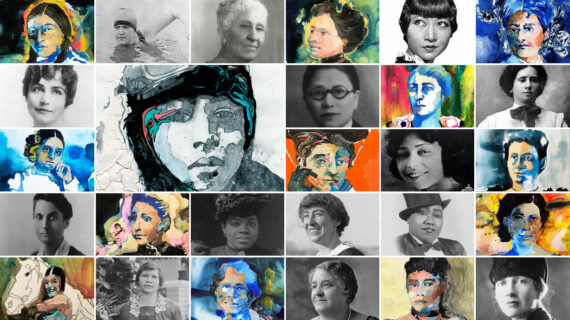
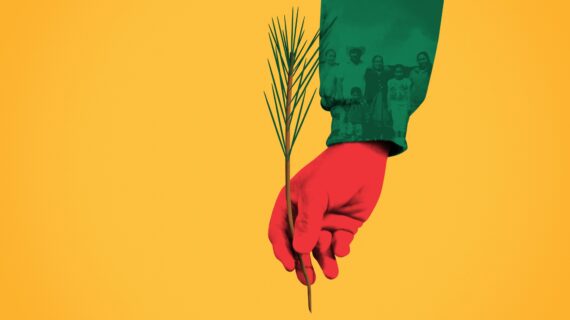
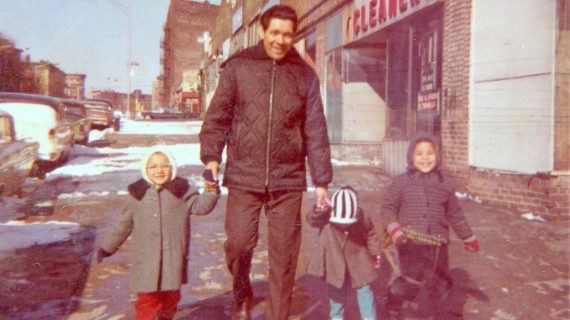
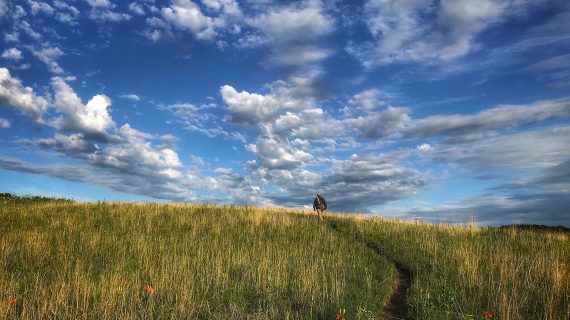
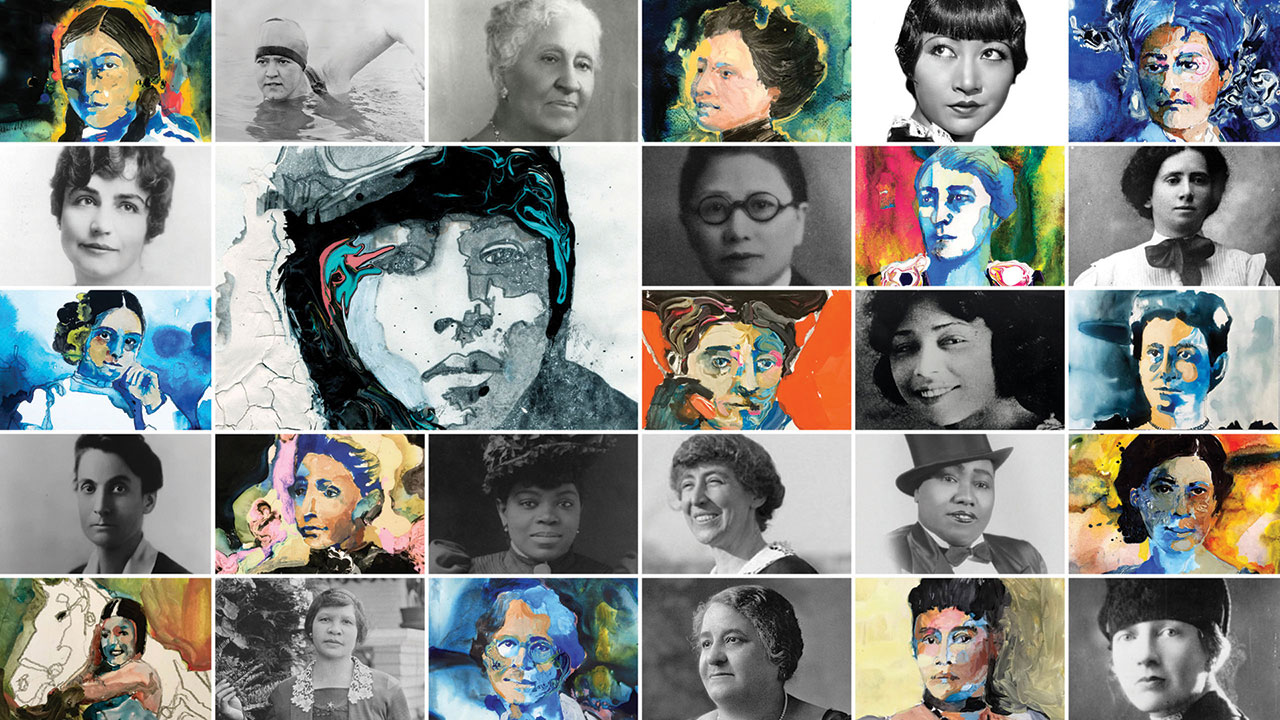
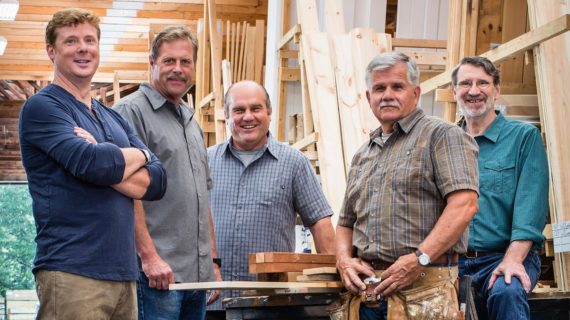

Follow Us